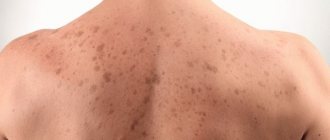What is laryngitis?
Laryngitis is an inflammation of the vocal cords located in the larynx. The larynx is located at the border of the mouth and trachea. In the same area there is an epiglottis, its function is to prevent food and saliva from entering the larynx during swallowing.
The larynx contains the vocal cords - 2 folds of mucous membrane that cover the muscles, as well as cartilage. Usually the ligaments close and open very smoothly, creating sounds through vibration and movement. But when a child has laryngitis, these ligaments become irritated or inflamed. This inflammation or swelling causes distortion of sounds, which makes the voice hoarse. There are some serious cases of laryngitis where the voice actually disappears.
Laryngitis is very common in children. It is difficult to meet a child who has not fallen ill at least once. This disease often occurs in autumn and spring - at the junction of cold seasons.
Due to age, the children's nasopharynx cannot properly contain the pathogen that has penetrated inside. And these harmful organisms fall lower - right into the throat. For an adult, laryngitis only causes discomfort, but for a child, the inflammation leads to big problems, since his throat is too narrow.
Adverse reactions
Complications rarely develop while taking Zinnat. The antibiotic is usually well tolerated. Short-term side effects may occur, which go away on their own and do not require adjustments to therapy. Sometimes deterioration in health persists for more than 1-2 days and causes vivid clinical symptoms. In such cases, you should stop taking the drug and consult your doctor.
Table - Adverse reactions of Zinnat in children
| Clinical signs | Frequency of occurrence | |
| Rarely | Very rarely | |
| Candidal stomatitis | + | |
| Skin redness, rash, itching | + | |
| Headache, moodiness, sleep disturbance | + | |
| Drug-induced (pseudomembranous) colitis | + | |
| Loose stools, refusal to breastfeed or eat food | + | |
| Jaundice | + | |
| Increased concentration of liver enzymes (AST, ALT) in peripheral blood | + | |
If Zinnat is ineffective within 3 days, as indicated by persistence or increase in clinical symptoms, the drug is replaced with another antibiotic.
Why is laryngitis dangerous?
One of the frequent complications of the acute course of laryngitis is its acquisition of a chronic course. A constantly recurring disease can lead to complete loss of voice.
Doctors warn about potential complications that really threaten the patient’s life:
- inflammation of the epiglottis;
- laryngeal stenosis;
- abscess.
The chronic course of the disease is the cause of impaired blood circulation and laryngeal function. Pathology can lead to the transformation of mucosal cells into cancerous tumors.
General information about the drug
The British-made drug Zinnat is a member of a group of antibiotics called second-generation cephalosporins. Medicines in this group are very effective and relatively low-toxic antimicrobial drugs (AMPs). The basis of their action is binding to target proteins, which disrupts the process of synthesis of new bacterial wall cells, which prevents them from reproducing and leads to their death, as a result of which the patient recovers.
Causes and risk factors
Of course, it is impossible to clearly establish the true cause, because each child has individual characteristics.
Often the disease occurs under the influence of several factors:
- colds of various etiologies (atypical pneumonia, influenza, adenovirus, measles);
- reaction to inhaled elements. These are allergic components of the furnishings (new furniture, all varnishes, paint, new appliances made of low-quality plastic), animal dander, dust. In practice, most pediatricians encounter familial laryngitis when the family has moved into an apartment where the furniture has been renovated or replaced;
- anatomical and physiological structure of the respiratory system (narrow throat and nasopharynx). Any inflammation of the respiratory system causes swelling (edema) of the tissues, and the larynx narrows significantly in the child, which complicates the passage of air;
- reduced air quality where the child is (hot dry air, dust, exhaust fumes, smoky rooms);
- mechanical factors - damage to the larynx, overexertion of the voice when singing, screaming, due to a loud long conversation;
- gastroesophageal reflux disease and foreign body aspiration can cause laryngitis.
The risk group includes children who have chronic diseases of the nasopharynx (as a result of which breathing through the nose is impaired) or who have diseases of the oral cavity.
Diagnosis and first aid for false croup
According to the famous doctor Evgeniy Komarovsky, croup is caused by the parainfluenza virus. The most risky period is the winter as a result of heating devices drying out indoor air. When it occurs later, it is especially difficult. You can determine the diagnosis yourself based on three noticeable signs and immediately consult a doctor:
- difficulty breathing when inhaling;
- change in voice (hoarse, disappears altogether);
- barking cough.
Against the background of the symptoms described above, the acute onset of the disease, sore throat, and high temperature are taken into account. The child turns pale and has a laryngitis-like dry cough. There can be no talk of any self-medication. Before the ambulance arrives, it is necessary to provide first aid:
- sits you on your lap, unbuttoning your clothes on your chest;
- calm the child;
- provide access to cool fresh air (open the windows, hang wet sheets and towels around the room);
- drink plenty of soda water and milk;
- for hyperthermia above 38 degrees, use antipyretics;
- if the temperature is not high, it is possible to apply a mustard plaster to the calf muscles;
- relieve swelling of the nasal mucosa with vasoconstrictor drops.
If the room is hot, take the child, dressed, out to the balcony in winter, and into the bathroom in summer, turning on cool water to increase the humidity level. In no case should you give expectorants or use hot steam inhalations! Such actions will worsen suffocation and guarantee subsequent hospitalization. Let's say an ultrasonic humidifier.
How to help a child with false croup.
Symptoms of laryngitis in children
The disease has pronounced symptoms, so it is not difficult to recognize the onset of the disease in a child.
Main features:
- redness of the larynx and swelling of the mucous membrane in the area of inflammation;
- cough barking and dry;
- the voice is hoarse or absent altogether;
- headaches and rhinitis;
- the temperature rises, but not significantly;
- swelling of the mucous membrane is accompanied by spasm of the larynx, which leads to difficulty breathing;
- tickling in the larynx and dry mouth.
Other signs of the disease are loss of appetite, difficulty breathing.
At night (closer to the morning), the cough of a child with laryngitis becomes more frequent and is sometimes accompanied by attacks of suffocation.
Children's medicines for the treatment of laryngitis
In the treatment of laryngitis, drugs from different groups are used.
Antihistamines
- Loratadine.
It is prescribed to children over one year old. The drug gives a minimum of side effects, does not affect the functioning of the heart and blood vessels, but provokes drowsiness and inhibition of reactions. The drug can be purchased both in tablet form and in the form of syrup.
- Erius.
This drug is approved for use by children over one year of age. It has a pronounced antihistamine effect and helps relieve bronchial spasm. Erius begins to act quickly. You can purchase the drug in both liquid and tablet form. In rare cases, while taking it, tachycardia may develop.
Immunostimulants
- Imupret.
The drug is available in two forms (dragée and tincture). Imupret contains herbs that have a general strengthening and immunomodulatory effect on the body. Taking it allows you to speed up recovery and shorten the duration of the disease. There are practically no contraindications to taking the drug, with the exception of allergies to the herbs included in its composition.
- Immunal.
This drug is prescribed to children to increase immunity and shorten the acute period of the disease. It can be offered to a child over one year old (in the form of a solution). Immunal is prescribed not only for the treatment of respiratory and other infections, but also for their prevention. Contraindications to taking the drug are autoimmune diseases and AIDS.
Antibacterial drugs
Antibacterial drugs for laryngitis can only be prescribed by a doctor. They are indicated for use when the disease was caused by microbial flora. Most often, antibiotics are prescribed in the case of phlegmonous laryngitis, or when complications develop.
- Amoxiclav.
This is a penicillin antibiotic that is harmful to many bacteria. It can be used to treat children of any age. The dose is selected taking into account the child’s body weight. It is prohibited to prescribe Amoxiclav to patients with jaundice and hepatitis. The most common side effect is allergies. The drug can be purchased in suspension and tablet form.
- Cefotaxime
- a cephalosporin antibiotic that destroys microbial wall cells. It is destructive for most representatives of the bacterial flora. The drug is used in the form of injections. It can be used to treat children from birth, but taking into account contraindications and side effects.
- Bioparox.
This is a local antibiotic that has a pronounced anti-inflammatory effect. It is available in aerosol form. Bioparox is used only after consultation with a doctor and a strictly limited course. If you do not comply with the terms of treatment, this will negatively affect your own microflora of the nasopharynx. The drug is prescribed to children over 2.5 years of age.
- Sumamed
- an antibiotic from the macrolide group. It has the ability to concentrate in high doses in the area of inflammation, due to which the microbial flora quickly dies. The dose is selected depending on the child’s weight. It is prohibited to prescribe Sumamed to patients with kidney and liver diseases. The drug is produced in the form of a suspension of capsules and tablets. The most common side effects are nausea and allergic reactions.
Signs of laryngitis in children under one year old
Children 4 to 5 years old can explain to adults what worries them and where it hurts, but in infants it is difficult to identify signs of illness. The child will not be able to complain about feeling unwell.
It is important to pay attention to the physical condition and behavior of the child. Contact a specialist immediately if you observe the following manifestations of laryngitis in infants:
- the baby has a serious cold;
- the child is lethargic and restless;
- the baby is capricious, and his cry is accompanied by wheezing and a dry, suffocating cough;
- noises and whistles are heard in the lungs;
- the nasolabial triangle is bluish (this is one of the most important signals, since blue color indicates the progression of the disease).
When laryngitis is detected in infants, treatment is prescribed only by a qualified pediatrician.
Treatment of children of different ages
In addition to medications, therapy prescribed by a doctor at any age includes inhalations with:
- saline,
- interferon,
- Lazolvan,
- Sinupret.
Physiotherapeutic treatment is indicated for chronic forms. Its action is aimed at:
- improvement of blood circulation,
- tissue restoration,
- reduction of inflammatory processes,
- strengthening immunity.
For these purposes the following are used:
- quartzing,
- UHF,
- darsonval,
- electrophoresis.
All of the above methods can be performed from birth if the child has no contraindications to them.
In newborns
As a rule, if a baby has laryngitis under 4 weeks of age, the doctor will refer the child for hospital treatment. In the initial stages, inhalations are used; if there are alarming symptoms, injection treatment and droppers are prescribed.
With intensive therapy and improvements on days 5-7, the baby and mother can be discharged. The length of hospitalization is extended in case of severe disease and complications.
Approximate drug treatment for a newborn with dosage:
- Fluimucil solution – 10 mg per 1 kg of weight;
- Bromhexine syrup – 2 mg 3 r. in a day;
- Ambrobene syrup – 2.5 ml 2 r. in a day;
- Gedelix syrup – 2.5 ml 2 r. in a day;
- Licorice syrup (diluted in 0.1 ml of water) – 1-2 k. 3 r. in a day.
In infants and one-year-olds
Treatment is also carried out in a hospital setting, the main difference is in dosages.
Drug treatment with dosage:
- Fluimucil solution – 100 mg 2 r. in a day;
- Bromhexine syrup – 2 mg 3 r. in a day;
- Ambrobene syrup – 2.5 ml 2 r. in a day;
- Gedelix syrup – 2.5 ml 2-3 r. in a day;
- Licorice syrup (diluted in 0.1 ml of water) – 1-2 k. 3 r. in a day.
Therapy in young children is aimed at preventing the development of complications and/or the addition of another infection. If the local pediatrician has no reason to suspect the development of a negative scenario for the development of the disease, home treatment may be recommended.
At 1 year to 2–3 years
Children aged 2 years and older can already explain what worries them and talk about their symptoms. Therefore, their treatment is less preventive than for babies 4-8 months old, and more symptomatic.
However, if the episode of laryngitis is the first in life (especially stenotic), the doctor may recommend going to the hospital.
Drug treatment with dosage:
- Fluimucil solution – 200 mg 2 r. in a day;
- Bromhexine syrup – 4 mg 3 r. in a day;
- Ambrobene syrup – 2.5 ml 3 r. in a day;
- Gedelix syrup – 2.5 ml 2-3 r. in a day;
- Doctor MOM syrup – 2.5 ml 3 r. in a day;
- Licorice syrup (diluted in 0.1 ml of water) – 2-10 drops. 3 r. in a day.
Forms of laryngitis
Laryngitis can be divided into acute and chronic. The symptoms of each type are similar, but vary in duration.
Chronic laryngitis develops over a long period and lasts for weeks or months, while acute laryngitis usually comes on suddenly and goes away within a few days (up to a week).
Types of acute laryngitis:
- catarrhal laryngitis. The mildest and most common form of the disease, since only the mucous membrane of the larynx is inflamed;
- phlegmonous laryngitis. Inflammation affects adjacent tissues of the larynx;
- stenosing laryngitis. Inflammation affects the subglottic region.
Very often the upper part of the trachea is involved in the inflammatory process. Then laryngotracheitis already occurs.
Types of chronic laryngitis:
- catarrhal form. The mucous membrane of the throat thickens, the vocal cords do not close completely, the voice becomes muffled and hoarse;
- atrophic form. With this form of the disease, there is a pronounced feeling of dryness in the throat, a disturbing non-productive cough, sometimes wet with extremely difficult sputum production;
- chronic hypertrophic laryngitis. This form of the disease is characterized by the appearance of obvious edema, which can cover the tissues of the entire larynx. In this case, nodules form on the tissues, their appearance sometimes leading to complete loss of voice.
Acute laryngitis
It has an abrupt onset and is usually a short-term inflammation. May have multiple sources.
Viral laryngitis in children
The most acute cases of laryngitis are caused by viral infections, the most common of which are rhinovirus, influenza virus, parainfluenza virus, adenovirus, coronavirus. In patients with weakened immune systems, other viruses such as herpes, HIV, and coxsackievirus may also be potential causes.
Bacterial laryngitis
This is another important cause of acute laryngitis and can occur in conjunction with a viral infection.
Common bacterial strains:
- group A streptococcus;
- streptococcus pneumoniae;
- Corynebacterium diphtheria;
- Moraxella catharalis;
- hemophilus influenzae;
- Bordetella pertussis;
- anthrax bacillus;
- Mycobacterium tuberculosis.
Fungal laryngitis
Laryngitis caused by fungal infection is common but underdiagnosed and may account for up to 10% of acute laryngitis cases.
Patients with both a functioning and a weakened immune system can develop fungal laryngitis, which sometimes results from past use of antibiotics or inhaled corticosteroids. Certain strains of fungi that can cause laryngitis:
- histoplasma;
- blastomycosis;
- candida (especially in people with weakened immune systems);
- cryptococcosis;
- coccidioidomycosis.
Laryngitis due to injury
Often develops due to overuse of the vocal folds (excessive shouting, singing). Although this often results in damage to the outer layers of the vocal folds, subsequent healing may result in changes in the physiology of the vocal cords. Trauma to the larynx can also lead to inflammation of the ligaments.
Symptoms
Acute laryngitis begins with fever, scratching and painful tickling in the throat. Then a barking cough appears, which soon softens and is accompanied by sputum. The voice becomes rough and hoarse or disappears altogether. Children predisposed to allergies experience difficulty breathing and wheezing. Possible pain when swallowing.
Stenosing laryngitis in children
Stenosing (obstructive) laryngitis, which develops due to diphtheria, is called true croup. Cases of obstructive laryngitis of other infectious origins are combined into the concept of “false croup”.
This disease is especially common in young children. This is due to the small size of the larynx and the abundance of loose fiber in the subglottic region. This anatomical specificity of the larynx in children favors the rapid formation of inflammation and edema.
Approximately half of the cases of false croup occur in children 1 to 3 years old. Children over 6 years old rarely get sick, accounting for only 9% of the total cases. The seasonal prevalence of false croup is pronounced, its peak is in late autumn and early winter.
False croup is often a complication of acute rhinitis, adenoiditis, pharyngitis, influenza, atypical pneumonia, measles, chickenpox, scarlet fever and other infections. False croup is sometimes caused by an exacerbation of chronic tonsillitis.
Obstructive laryngitis differs in that inflammation is accompanied by stenosis.
Laryngeal stenosis is caused by multiple pathogenic mechanisms. Firstly, inflammation of the larynx with stenotic laryngitis is characterized by severe swelling of the subglottic space; the larynx narrows the gap in this place. Secondly, there is a reflex spasm of the laryngeal muscles, which is worsened by stenosis. Thirdly, due to inflammation, the secretory activity of the laryngeal mucosa increases, forming a large amount of viscous mucus. Sputum greatly narrows the lumen of the larynx.
Due to the above-mentioned mechanisms, obstructive syndrome develops - a violation of the air passage into the respiratory tract.
At the onset of obstructive laryngitis, the insufficient supply of oxygen to the body is compensated by increased functioning of the respiratory muscles and more intense breathing.
As the level of stenosis and obstruction increases, a period of decompensation is observed. As a result of severe stenosis with hypoxia (oxygen starvation), the functioning of the nervous and cardiovascular systems, as well as other tissues and organs, is disrupted.
Symptoms
A loud, barking cough, hoarseness and stridor - noisy breathing caused by a narrowing of the lumen of the larynx. Inspiratory shortness of breath occurs (difficulty inhaling). The child is restless. The degree of fever depends on the type of pathogen and the body's response. Low-grade fever (often with parainfluenza infection) and an increase in temperature up to 40 ° C (mainly with influenza) are possible.
Degrees of stenosis
Clinical signs of obstructive laryngitis are directly determined by the degree of laryngeal stenosis:
- I degree. Shortness of breath appears only with tension and excitement of the child. On auscultation, prolonged breathing and the presence of isolated wheezing rales in the lungs are heard, manifesting mainly on inspiration;
- II degree. Characterized by the presence of shortness of breath at rest. Auscultation reveals dry wheezing. There is a bluish (cyanotic) color of the nasolabial triangle, indicating oxygen starvation. Tachycardia, anxiety, sleep disturbances are present;
- III degree. Severe inspiratory dyspnea. There is a pronounced large “barking” cough, dysphonia (voice sound disturbances), diffuse cyanosis, and tachycardia. Childhood anxiety gives way to lethargy, confusion, and drowsiness. In the lungs, during inhalation and exhalation, inhomogeneous dry and wet wheezing is heard;
- IV degree. There is no typical croupous “barking” cough and noisy breathing. There is irregular shallow breathing, bradycardia (decreased heart rate), hypotension (decreased blood pressure). There are convulsions. Confused consciousness turns into a hypoxic coma. Obstructive laryngitis with IV degree of stenosis is fatal due to asphyxia.
Chronic laryngitis
Chronic laryngitis is a fairly common disease in which inflammation of the mucous membrane of the larynx is recurrent.
Often the disease is accompanied by the development of repeated inflammation, spreading to the upper respiratory tract.
Causes
Many factors can cause chronic laryngitis, including:
- frequent acute laryngitis;
- diseases associated with metabolic disorders;
- complications of influenza or chronic infectious diseases;
- exposure to dust, food or chemical allergens;
- repeated high loads on the vocal apparatus;
- a place of residence characterized by severe pollution and dusty air;
- sudden changes in temperature;
- weakening of protective functions;
- allergic reaction;
- gastroesophageal reflux.
Symptoms
The symptoms of chronic laryngitis are nonspecific, and their expression directly depends on the severity of pathological changes in the vocal cords.
Common symptoms include hoarseness, loss of voice, throat irritation and dry cough. Cough appears due to stimulation of tactile receptors located in the larynx, or the formation of zones of inflammatory damage in the trachea and bronchi.
The child may have a fever, swelling of the lymph nodes in the neck, and difficulty swallowing.
Hoarseness manifests itself in varying degrees. In some children, this symptom occurs only in the morning and goes away during the day. But sometimes patients have persistent dysphonia.
Treatment of false croup
In the treatment of false croup, it is important to remember the causes of its occurrence. As a result of inflammation, the lumen of the airways narrows, swelling of the mucous membranes, hypersecretion (mucosal secretions). Also, fear due to difficulty breathing and neurosis on this basis cause spasm of the larynx. This is especially important for children with a narrow larynx, prone to obesity and allergic reactions. So, let’s treat it at home competently:
- Calm the child, eliminate any irritants;
- The room temperature should be maintained at about 18 degrees, humidity maintained at least 40;
- Voice rest (to lure the child with quiet games).
In a hospital setting, the child receives anti-inflammatory therapy and antibiotics. If necessary, resuscitation measures are taken. If there is a threat to life, surgical intervention is permissible.
Treatment of false croup.
When should you call an ambulance?
- Breathing problems. It becomes intermittent, irregular, sometimes accompanied by shortness of breath.
- The occurrence of obstructive laryngitis, especially in infants.
- Complicated degrees of laryngitis.
- The presence of chronic nervous system diseases, allergic reactions and other factors that worsen the condition.
- If a child experiences fear when coughing, shortness of breath, or the temperature remains above normal for more than a day, you should immediately call an ambulance.
With the development of obstructive laryngitis, all efforts should be directed toward reducing spasm and laryngeal edema and restoring normal breathing. Before the doctors arrive, do alkaline inhalation, place the child vertically in a humidified room, and a possible distracting procedure - a hot foot bath.
Contraindications and possible side effects
Zinnat cannot be prescribed to every patient. It is contraindicated:
- with hypersensitivity to cephalosporins, carbapenems and penicillins,
- up to three months (for any form of medication),
- up to three years (for taking tablets).
The drug should be used with caution in the presence of renal failure and gastrointestinal diseases.
The medicine is usually well tolerated, but sometimes causes reversible side effects, which in children can occur in the form of:
- dyspepsia (abdominal pain, diarrhea, nausea, vomiting),
- an increase in the number of eosinophils, a decrease in the number of leukocytes and platelets, in rare cases there is a decrease in the number of red blood cells, leading to hemolytic anemia,
- skin allergic reactions,
- dizziness, migraine, seizures,
- hepatitis A.
Diagnostics
A medically trained professional can diagnose laryngitis in a doctor's office with a little testing. The examination is often brief and limited to examining the ears, nose, throat and looking for other potential causes of cold-like symptoms. If your throat is red and a strep throat infection is suspected, a rapid strep test may be ordered.
If a hoarse voice becomes chronic, a specialist should conduct a further interview and examination to find out why the larynx remains inflamed for such a long time.
In most cases, no additional tests are required to confirm the diagnosis of laryngitis. In patients with chronic laryngitis, the need for blood tests, x-rays, and other diagnostic tests will depend on the patient's examination and the physician's potential concern for hoarseness.
Laryngoscopy is the most common test performed to look directly at the vocal cords and evaluate their function. The procedure uses a thin tube containing a lighted fiber-optic camera that is inserted through the nose and into the lower part of the throat.
The doctor performing this procedure can see if the vocal cords are inflamed, if there are polyps or growths on them, and if the vocal cords are moving properly with breathing and speech. This test is often performed by an otolaryngologist, but many other doctors and specialists are trained in direct laryngoscopy.
Chronic stage
Chronic laryngitis in a child develops according to the principle of catarrhal inflammation, atrophy or hypertrophy of tissues. Age category: children over ten to twelve years old. Characterized by symptoms such as:
- low-grade fever;
- slight cough;
- rough voice;
- sore throat;
- vocal cords get tired quickly.
These signs in a child increase significantly with exacerbation of laryngitis. There is a high probability of a night attack of false croup occurring in a child under five years of age. A choking child with blue lips makes wheezing sounds, his skin is covered with sweat. Tachycardia is observed - accelerated heartbeat.
An emergency call is required. The doctor will decide on the treatment.
Treatment. Regime moments
Comprehensive treatment in the early stages of the disease involves following the following recommendations.
- Strict bed rest.
- Limiting the load on the vocal apparatus. The child should talk less. It's difficult, but this measure is the key to a quick recovery. For young children who develop laryngitis, limiting overexertion is especially important since the vocal cords are still developing and overexertion can lead to permanent voice problems.
- Constant air control. The best option is moderately humid air in the room. This can be achieved by using a humidifier and regularly airing the room.
- Drink plenty of fluids - fruit drinks, herbal teas, milk, bottled water. The main goal is to prevent dry cough and reduce intoxication.
- Balanced diet, vitamins, avoidance of irritating foods. The food is dietary and healthy.
Effective drug treatment
Antiviral suppositories: “Viferon”, “Laferobion”, “Alfarekin”. With correctly prescribed treatment, on the third or fourth day, a small amount of sputum begins to be released, for example, taking the cough suppressant “Bromhexine”. Remedies for bronchospasm - "Eufillin".
It is unacceptable to use aerosol sprays on a one-year-old child, which can provoke laryngospasm. To relieve edema, antihistamine drugs with cetirizine and desloratadine are used. Nazivin drops can be used in the nose for rhinitis.
Among antipyretics, preparations with ibuprofen and paracetamol are acceptable, but preparations of acetylsalicylic acid are contraindicated due to the threat of life-threatening Reye's syndrome. Bacterial laryngitis requires the use of antibiotics, mainly the penicillin group.
How to treat laryngitis in children?
Standard drugs
A standard treatment package involves the use of several groups of medications:
- Antihistamines. This group of medications is always prescribed for laryngitis in children. They not only reduce swelling of the mucous membrane, but also have a calming effect on the child, especially good if you give these drugs at night (Suprastin, Zyrtec, Cetrin, Zodak, Claritin).
- Expectorant and antitussive medications. There are countless such drugs on the pharmacy market. But the choice should be made only by a pediatrician. For severe paroxysmal cough, the doctor may recommend antitussives or a combination of drugs in a dose according to age (Gerbion, Sinekod, Stoptussin phyto, Libexin). When the cough becomes wet, the doctor may prescribe expectorant medications for wet cough (Alteyka, Thermopsis), drugs with the active component bromhexine (Solvin, Bronchosan), acetylcysteine (Fluimucil), ambroxol (Lasolvan, Ambrobene).
- Preparations in the form of sprays. Among the most effective sprays are Lugol spray, Hexoral, Miramistin, Faringosept, Stopangin.
- Antipyretic. At high temperatures exceeding 38.5 ° C, you can give Paracetamol or Ibuprofen recommended for children.
Antibiotics for laryngitis
The use of antibacterial therapy for laryngitis is justified only for the following reasons:
- There is bacterial inflammation, which is detected only after diagnosis (laboratory tests, taking a smear from the mucous membrane of the larynx).
- Intoxication – severe fever, chills, weakness, lack of appetite.
Pediatricians often play it safe and prescribe antibiotics for uncomplicated laryngitis to avoid consequences.
Only in some cases, laryngitis is bacterial; often it is a viral infection that cannot be treated with antibiotics.
Antibiotics that are often used for laryngitis:
- a series of penicillins (Amoxiclav, Flemoclav Solutab, Augmentin);
- cephalosporin syrups (Cefadox, Cefixime, Suprax), injections (Fortum, Ceftriaxone);
- for severe laryngitis, azithromycin (Zetamax retard, Sumamed, Gemomycin, Azitrox, Ecomed) and other macrolides (Clarithromycin, Macropen) are prescribed.
Inhalations for laryngitis
A picture familiar to many from early childhood: a pan of freshly boiled potatoes or a hot kettle with a closed spout and a large towel, carefully prepared. For decades, steam inhalation has been a favorite folk method of combating inflammation of the respiratory tract of infectious origin. To replace home devices, technological inventions have appeared that affect the source of the disease most effectively and safely.
Inhalation for laryngitis is one of the most effective treatment methods.
The course of treatment is 5 - 10 procedures.
Contraindications
Restrictions include:
- acute sinusitis;
- purulent inflammation in the nasopharynx;
- otitis;
- bacterial infection;
- allergies to the ingredients of medications used for therapy;
- weak immune defense;
- certain systemic diseases.
Types of inhalations
Inhalation is conventionally divided:
- according to the temperature regime - cold (treatment at room temperature) and hot (the inhaled drug is preheated);
- according to the method of obtaining the medicinal substance - steam (dry or wet) and hardware (inhalers, nebulizers).
Cold inhalation involves the use of aerosols and sprays with medicinal ingredients, enhanced with plant extracts and aromatic oils. They are prescribed only by a specialist and are part of a therapy consisting of antibiotics, antiviral drugs and other types of inhalation.
Hot methods include steam inhalation, which is performed in a variety of ways.
Breathing should be soft, deep breaths are not allowed, so as not to burn the mucous membrane of the larynx.
Inhalations using sea salt and baking soda give a positive result. Alkaline inhalation using soda is used to alleviate the disease. This procedure takes no more than 8 minutes to complete. The use of soda solutions leads to a reduction in swelling of the mucous membrane of the throat and reflex activation of cough with copious sputum. Inhalation should be done no more than 2 - 3 times a day.
When there is no allergy, you can inhale with essential oils (cedar, pine, juniper, eucalyptus). You only need a few drops of oil per glass of water.
Hardware inhalation methods
Now you can easily purchase devices for steam inhalation in pharmacies and specialty stores. With their use, the treatment procedure is much simpler. One such device is a nebulizer. The device generates steam at room temperature. This aerosol condenses on the walls of the larynx and on the vocal cords. Thus, the drug acts directly at the center of the inflammation process.
Today, inhalation nebulization is performed both in the hospital and at home.
There are three types of nebulizers:
- ultrasonic;
- compressor;
- mesh nebulizers.
Ultrasonic type nebulizers are used primarily in hospital settings. A medical aerosol of a liquid drug is formed due to the influence of ultrasonic waves.
Compressor-type nebulizers, by compressing air in a special chamber, transform liquid medications into therapeutic vapors. The structure of the drug is not disturbed. This gives you the opportunity to use all medications that are suitable for this device. The large size of the device and a lot of noise, which frighten children, are its disadvantages.
The third type of nebulizer (mesh inhalers) combines the best of compressor and ultrasonic nebulizers. Under the influence of ultrasonic waves of a lower frequency, a fine aerosol is created. Moreover, the devices do not create noise, are small in size, and do not cause drug degradation. The main disadvantage is the high price.
Carrying out inhalation using a nebulizer
Rules for the procedure:
- the procedure is performed while sitting, the device must stand vertically;
- during inhalation it is necessary to maintain silence;
- The procedure should be started no later than six hours after eating;
- after the procedure you need not talk for hours and not eat;
- if a sore throat does not allow you to inhale and exhale the medicine through your mouth, do this in a special mask;
- The drug can be diluted with saline solution according to the instructions;
- the duration of the procedure is no more than 10 minutes;
- After inhalation, the device is washed with distilled water and wiped dry.
For children 3 to 4 years of age, inhalation therapy is included in the treatment plan by prescription only, as the risk of potential obstruction is greater than the benefit. Exposure to steam is possible from 3 to 7 years, but only with great caution. After 8 - 10 years, the effectiveness of inhalation for children is similar to therapy for adults.
At home
If there is no need for hospitalization, treatment at home under the supervision of a pediatrician is allowed.
, the following rules must be observed :
- frequent ventilation - to avoid the spread of pathogenic bacteria throughout the room;
- air humidification - in the heat, the mucous membrane of the nose and larynx is dry, which simplifies the penetration and spread of microorganisms; it is recommended to install air humidifiers, aquariums, and fountains in the room;
- a large amount of warm liquids - compotes, weak teas, fruit drinks, milk with butter and Borjomi will help relieve the condition;
- ensuring the correct position - the upper body should be elevated, pillows placed under the back help facilitate breathing;
- dietary nutrition - exclude foods that irritate the mucous membrane of the larynx (fried foods, citrus fruits, sausage), preference should be given to pureed foods;
- vocal rest - it is recommended to remain silent, if necessary, speak quietly, as whispering puts stress on the ligaments.
The baby needs to be fascinated as much as possible with reading , quiet games and other activities, as this will help him forget about the cough. Small children switch easily and are distracted, so you should not neglect this method of alleviating the baby’s condition.
For treatment up to 3 years, it is allowed to use rinses with:
- honey,
- sea salt,
- aloe and beet juice.
Carrot juice with honey helps a lot : during the day the baby should drink 1/3 tbsp. Warm milk with the addition of honey or Borjomi diluted in equal proportions with milk can be used as a drink. The baby should like any drink offered - this way he will recover faster.
Description of the disease
Laryngitis is one of the most common forms of ARVI in children, characterized by inflammation in the mucous membrane of the larynx.
The disease causes significant discomfort in the child, as it is accompanied by damage to the vocal apparatus and respiratory dysfunction. The disease may be primary, or may occur in conjunction with other inflammatory processes of the ENT organs (for example, tracheitis or bronchitis). Laryngitis requires immediate diagnosis and treatment. In the absence of qualified assistance, the disease can become chronic or cause serious (sometimes life-threatening) complications. In some cases, inflammation of the walls of the larynx is accompanied by tissue hypertrophy and narrowing of the lumen of the organ, which can lead to oxygen starvation or suffocation.
For timely treatment of laryngitis, the child must be shown to a qualified doctor. A competent specialist is able to identify the disease and prescribe appropriate treatment at the stage of the initial examination.
Complications of the disease
The main complication of laryngitis in a child is false croup. The soft, short, narrow vestibule of the larynx, its funnel-shaped shape, as well as excessive excitability of the muscles of the glottis, the prevalence of the tone of the sympathetic nerves contribute to it.
Asphyxia is typical when timely assistance is not provided. Hypothermia, convulsions, low heart sounds, complete cessation of breathing up to coma and death.
Laryngotracheitis (cough more often than with laryngitis), pneumonia, bronchitis often occur as complications of laryngitis. They require long-term, sometimes intensive treatment.
Pneumonia.
Forecast
The lack of adequate therapy threatens the small patient with the transition of the pathology to the chronic stage with impaired function of the vocal cords. Acute laryngitis affects the upper respiratory tract, but the disease quickly progresses, penetrating deeper into the respiratory system. All this can lead to loss of voice (complete or partial), pneumonia, purulent abscess, sepsis, and phlegmon of the neck.
If treatment is provided on time and competently, then the prognosis is favorable, although the disease causes severe discomfort to the child, both from a physical and psychological point of view.
Gargling
When talking about what medications a child should be given for laryngitis, one cannot fail to mention rinsing. This important measure should be part of any laryngitis therapy.
The most common and safest rinses are chamomile and calendula. They can be used either independently or in combination with Chlorhexidine, Chlorophyllipt, soda, eucalyptus oil, Furacilin. For one glass of herbal infusion, take a teaspoon of the above drug. Rinsing with herbal decoctions is carried out five times a day, with medications - three times a day.
Nebulizer and steam inhalations
Treatment at home involves the use of inhalations. It is convenient to carry out dosed administration directly into the lesion using a device - a nebulizer. Solutions of Lazolvan, Ambrohexal, physiological sodium chloride solution, Borjomi, drugs for bronchospasm (Berodual, Ventolin), glucocorticosteroids for stenosis (Pulmircort) are used for their intended purpose.
In cases where a nebulizer is not available, steam inhalations over boiled potatoes and chamomile infusion are possible. With false croup, hot inhalations are unacceptable!
Nebulizer and steam inhalations.
Sprays and lozenges
Medicines for laryngitis for children 3 years of age and older can be prescribed in lozenges. Among them, Faringosept, Lizobakt, Strepsils, Hexoral Tabs, Neo Angin, Teraflu Lar, Sage, and Septolete are popular.
Tablets are taken 1-2 hours before meals or 30 minutes after meals. Before using the lozenge, rinse your throat well. For advanced laryngitis, lozenges are consumed every 2-3 hours. Duration of therapy – 5 days.
Sprays give good results in the treatment of laryngitis. Popular:
- "Tantum Verde";
- "Hexoral";
- "Kameton";
- "Miramistin";
- "Inhalipt."
The drugs are used up to four times a day, one injection, after gargling. The duration of treatment is 5-7 days.









